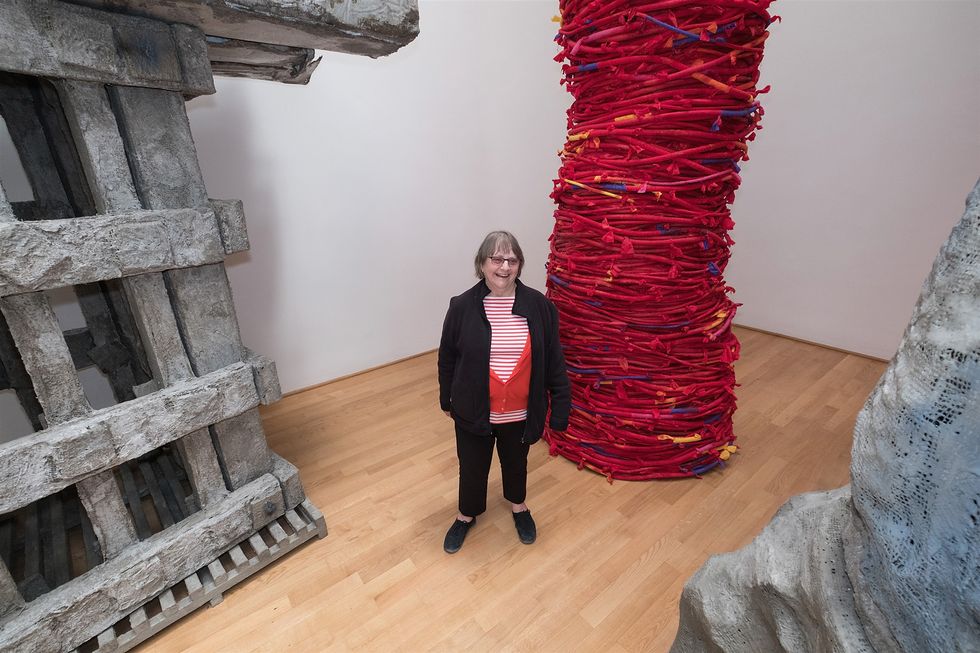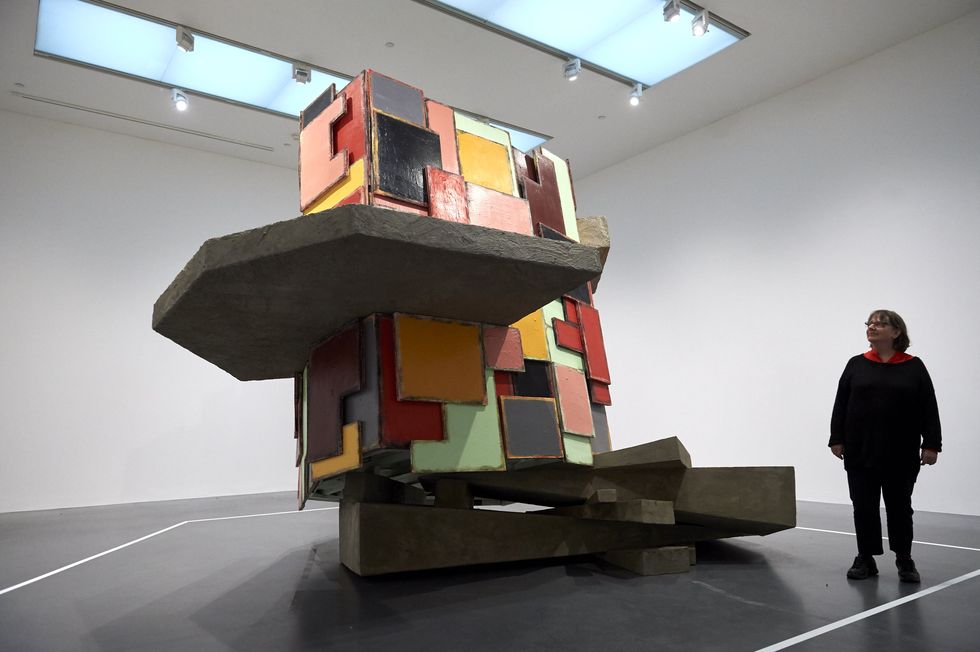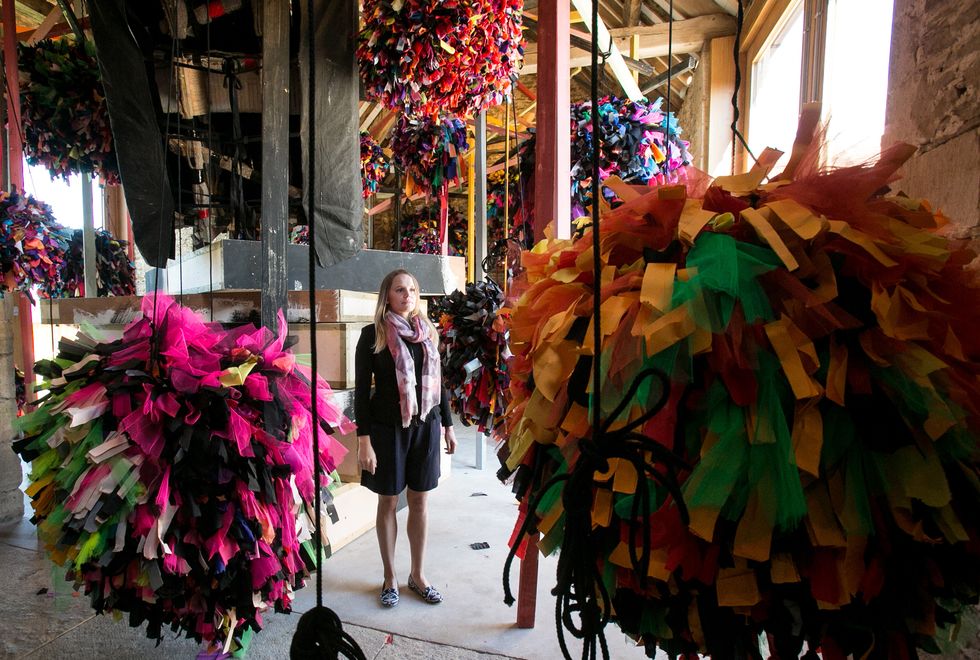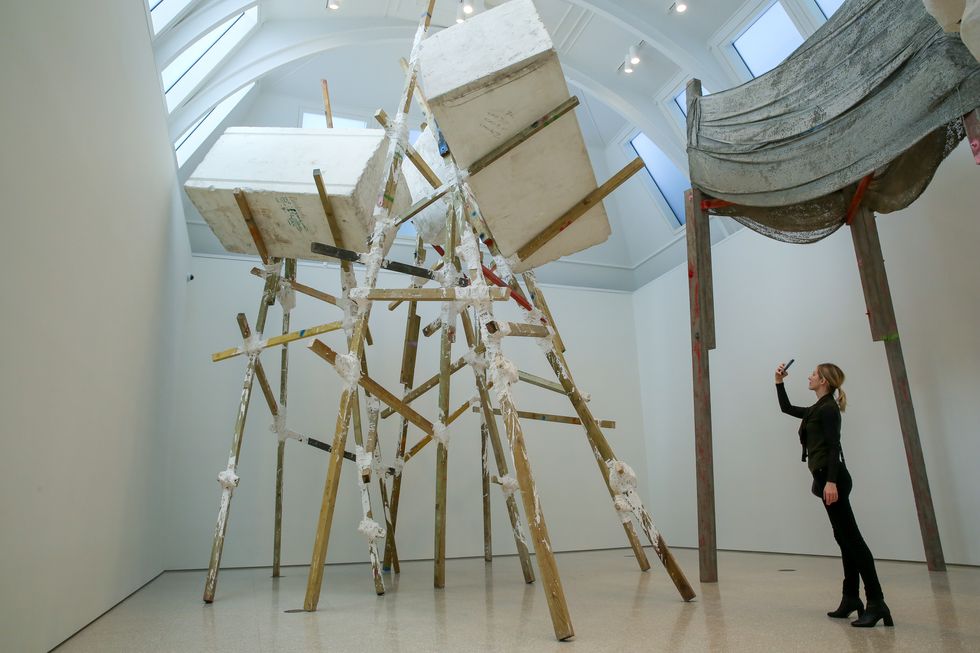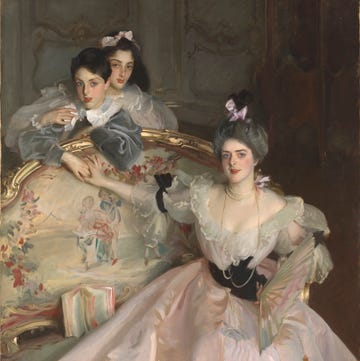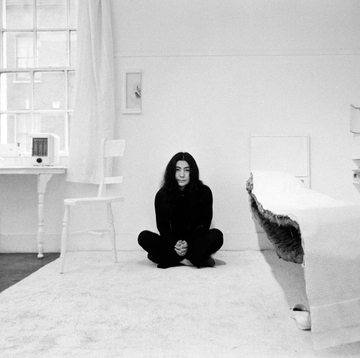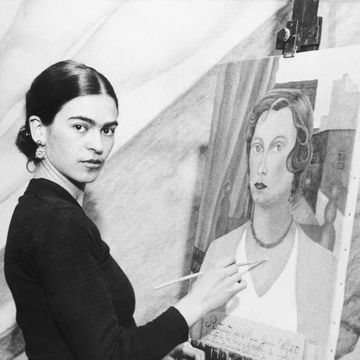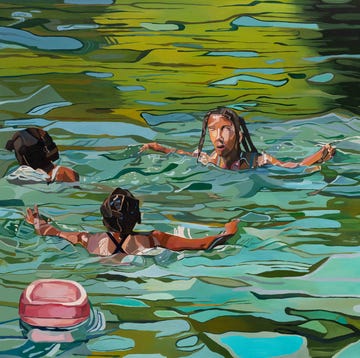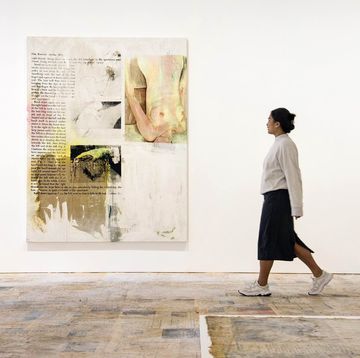The celebrated British sculptor Phyllida Barlow has died aged 78. Her gallery, Hauser & Wirth confirmed the news, calling her a "guiding light and inspiration to so many". Known for her colossal sculptural projects, the Newcastle-born artist spent many years teaching art before she had her breakthrough with an exhibition at the Serpentine Gallery in 2010.
Barlow, who was accepted as a member of the Royal Academy of Arts in 2011, was awarded a CBE in 2015 and a damehood in 2021. In 2017 she was selected to represent Britain at the Venice International Art Biennale, widely recognised as the most important contemporary art festival in the world. Here, we revisit an interview given to Harper's Bazaar in 2014, in her memory.
Phyllida Barlow’s work is not for the faint-hearted, as visitors to Tate Britain have been discovering. Since late March, her sculptures – towers of card-board lashed with fluorescent tape; crates made of wooden batons filled with Styrofoam and torn and crumpled turquoise paper – have taken over the building’s elegantly cold Duveen Galleries, fighting against the grandeur with a loose and edgy energy.
"I love the tension," said Barlow back in March, as the show was being installed by a gang of 12 under her watchful eye. "I want visitors to feel they’ve become part of the work, physically engaged. Usually I can’t bear people touching my work, but in this most peculiar context – which to me is neither a public nor private space – the rules change. I imagine there will be a lot of touching. The health-and-safety lot are a bit bewildered," she added with a cackle. "The nature of the work is somewhat different to what they’re used to."
It might surprise you to learn – what with the restless spirit of the pieces, their messiness and lack of gloss – that their creator turned 70 in April. Although Barlow has been a practising artist since she left the Slade in the 1960s, it is only in recent years that her star has fully risen. After a suitably surprising show at the Serpentine Gallery in 2010 (stacked wedges dripping multicoloured streamers; accretions that seemed to be forcing themselves against the walls and out of the gallery), she was swept up by the international gallery Hauser & Wirth, and, thereafter, the art world has taken notice.
"I don’t make work to sell," says Barlow, as we walk through her huge studio in a featureless stretch of south London, "but the gallery does sell it, which is a new thing for me, and I can’t pretend it isn’t extremely helpful."
Such is Hauser & Wirth’s delight in the artist that its new Somerset campus – an 18th-century farm at Durslade reinvented as a rural art hub – will open in July with an exhibition of her work, all of it new. The largest space will contain 60 bright paper and fabric pompoms that have been in production since November. "But they’ll be interspersed with dark objects," says Barlow. "I’m interested in the idea of the celebration, but it’s often quite a forced affair. The ghastly idea of the surprise party – the room with the lights out and all those people waiting for you in the blackness..."
Barlow was born in Newcastle in 1944, and is the great-great-grandaughter of Charles Darwin. In 1966 she married Fabian Peake, also an artist, whose father was Mervyn Peake, the writer of the fantasy Gormenghast series. Thus their fivechildren have an astonishing gene pool, and "several have become artists," says Phyllida. The most famous is the youngest, Eddie Peake, whose works have included homoerotic performance art and a naked football match. Phyllida and Fabian’s home in Finsbury Park is emptier now, and bedrooms are gradually being co-opted as studios.
"I don’t think having children and being an artist are compatible at all," she says with candour. "I don’t mean that as a negative thing, just that both require full-time attention. Both are emotional and hazardous. Things go wrong. You don’t just have children and wind them up. They get themselves into trouble of all kinds. But I’m proud of all that. Fabian and I never cared about the five A-levels and Grade 8 cello. We’re more interested intaking the scenic route to somewhere else, not the motorway."
Phyllida taught for more than 40 years at Slade, and for the last four she held the prestigious position of professor of fine art. (She retired in 2009.) "I was in the right place at the right time," she says. "I think it was more difficult for my husband to get teaching work than me. Art schools suddenly became aware of female artists." Those who have benefited from her tutelage include Tacita Dean, Douglas Gordon and Angela de la Cruz.
"And all my assistants have been students or former students," she says. "I remember going to do something at the Henry Moore Studio in Halifax and the poor, unfortunate person who came with me was Rachel Whiteread. She was not a happy bunny, I can tell you. The work was simple, but it went on and on and on." The two have since become friends, fellow travellers in the demanding world of sculpture. "It’s not a comfortable art form," says Barlow. "If it’s nice little knick-knacks sitting on your mantelpiece, it’s fine. But otherwise, it’s really a peculiar art form and sometimes hideous." Which, in her case, is exactly why it’s so great.

